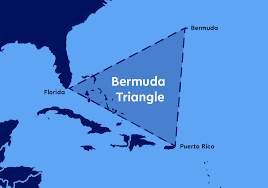Largest Container Port in India: Jawaharlal Nehru Port (JNPT)

India, a nation with an extensive coastline stretching over 7,500 kilometers, plays a significant role in global maritime trade. With the increasing demand for international shipping and trade, ports have become vital economic arteries for the country. Among these, Jawaharlal Nehru Port (JNPT) stands out as the largest container port in India. Also known as Nhava Sheva, JNPT is not just the busiest container-handling port in the country but also a symbol of India’s growing prowess in global commerce.
Introduction to Container Ports in India
India has over 200 ports, including 12 major ports and numerous minor and intermediate ports. Out of these, container ports specialize in handling containerized cargo, which is the most efficient and secure form of transporting goods globally. Container ports are equipped with modern cranes, storage yards, and logistics support to handle goods packed in standard-sized containers.
As India’s economy opened up post-1991, the volume of exports and imports grew exponentially, necessitating the modernization and expansion of its port infrastructure. The government and private sector began investing heavily in upgrading ports, and the Jawaharlal Nehru Port emerged as the frontrunner in container handling.
Jawaharlal Nehru Port (JNPT): Overview
-
Location: Navi Mumbai, Maharashtra
-
Established: May 26, 1989
-
Port Type: Natural/Artificial hybrid
-
Primary Function: Container handling
-
Area Covered: Approximately 2,500 hectares
-
UN/LOCODE: INNSA
-
Annual Container Traffic: Over 5.5 million TEUs (Twenty-Foot Equivalent Units)
JNPT is strategically located near Mumbai, one of India’s largest commercial hubs. It was developed to relieve the pressure on the Mumbai Port (MBPT), which was facing severe congestion. Since its inception, JNPT has grown into a world-class facility that handles more than 50% of India’s total containerized cargo.
Facilities and Infrastructure
JNPT is equipped with state-of-the-art infrastructure to support large-scale container handling operations. Some of its key features include:
-
Five Container Terminals: JNPT has multiple container terminals, including:
-
JNPT Container Terminal (JNPCT) – operated by the port itself
-
NSICT (Nhava Sheva International Container Terminal) – operated by DP World
-
GTI (Gateway Terminals India) – a joint venture between APM Terminals and CONCOR
-
NSIGT (Nhava Sheva India Gateway Terminal)
-
BMCT (Bharat Mumbai Container Terminals) – operated by PSA International of Singapore
-
-
Berths and Cranes: The port features deep-draft berths and sophisticated quay cranes capable of handling the largest container vessels in the world.
-
Rail and Road Connectivity: JNPT is well-connected by road (NH-4B, NH-348) and rail to major industrial and commercial centers across India. The Dedicated Freight Corridor (DFC) project further boosts its inland connectivity.
-
Container Freight Stations (CFSs): Several CFSs operate near the port to manage cargo logistics and reduce congestion.
-
Dry Ports and ICDs: JNPT is linked with Inland Container Depots (ICDs) across North India, extending its reach to landlocked regions.
Performance and Achievements
JNPT has achieved remarkable milestones over the years:
-
Record Container Volumes: In FY 2023-24, JNPT handled over 5.95 million TEUs, reflecting its leading position in the Indian maritime sector.
-
Digital Initiatives: JNPT has adopted digital platforms such as Port Community System (PCS) and Logistics Data Bank (LDB) to streamline operations and enhance transparency.
-
Sustainable Practices: JNPT has been implementing green port initiatives, including electric vehicles, solar power generation, and sewage treatment plants.
Economic Significance
The economic contribution of JNPT cannot be overstated:
-
Trade Facilitation: JNPT facilitates trade for major industries including textiles, chemicals, pharmaceuticals, automobiles, electronics, and engineering goods.
-
Employment Generation: The port and its allied industries generate employment for thousands of workers, both directly and indirectly.
-
Revenue Generation: JNPT contributes significantly to government revenues through port charges, customs duties, and excise collections.
Moreover, JNPT has helped in reducing the cost of logistics, improving the competitiveness of Indian exports, and promoting regional development in Maharashtra.
Future Plans and Expansion
To maintain its competitive edge and meet future trade demands, JNPT is undergoing massive expansion and modernization:
-
JNPT-SEZ (Special Economic Zone): JNPT is developing a multi-product SEZ spread over 277 hectares, expected to attract investments and generate employment.
-
Fourth Container Terminal (FCT): The FCT, being developed in two phases, will significantly increase the port’s container handling capacity.
-
Port-led Development under Sagarmala Project: JNPT is a key component of India’s Sagarmala initiative aimed at port modernization, connectivity enhancement, and industrialization.
Comparison with Other Ports
While JNPT leads the container segment, other major container ports in India include:
-
Mundra Port (Gujarat) – operated by Adani Ports, it is India’s largest commercial port and rapidly growing in container volume.
-
Chennai Port – an older port with a significant share in South India’s container trade.
-
Krishnapatnam and Visakhapatnam Ports – rising players on the eastern coast.
Despite competition, JNPT retains its dominance due to its strategic location, robust infrastructure, and continuous improvements.
Challenges
Like any major infrastructure facility, JNPT faces certain challenges:
-
Congestion during peak seasons
-
Environmental concerns from increased maritime traffic
-
Competition from privately operated ports like Mundra
-
Need for continuous technological upgrades
However, proactive measures from the port authority and government policy support are helping mitigate these issues effectively.
Conclusion
As India moves towards becoming a $5 trillion economy, the role of efficient container ports like JNPT becomes increasingly critical. Jawaharlal Nehru Port not only holds the title of the largest container port in India but also represents the nation’s aspirations in maritime trade. With modernization, innovation, and strategic planning, JNPT is well on its way to becoming one of the top container ports in Asia, driving India’s economic growth and global trade ambitions.





Leave a Comment